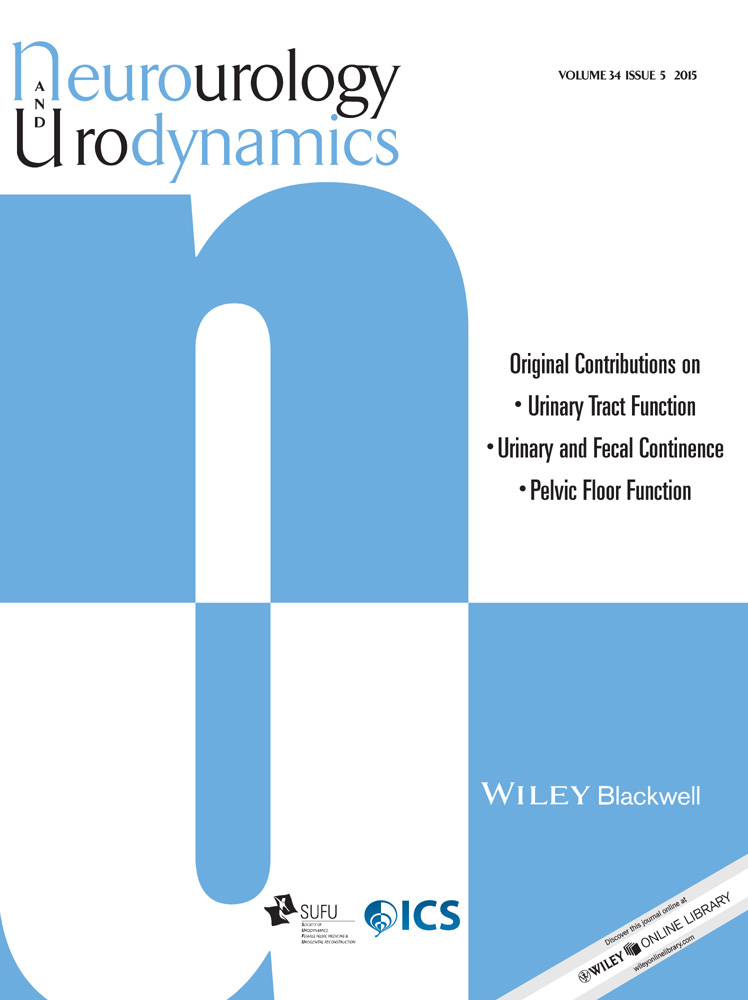The multidimensional sensation of desire to void differs between people with and without overactive bladder
Abstract
Aim
To determine whether the multidimensional sensation of desire to void can be reliability assessed and whether differences exist between people with and without overactive bladder (OAB). Assessing reliability and convergent validity of OAB screening tools comprised a secondary aim.
Methods
This observational, repeated-measures study involved 64 volunteers (47 female), aged ≥50 years, with and without OAB symptoms. Six sensory dimensions (intensity, unpleasantness, suddenness, perceived difficulty “holding on,” bladder fullness and location of sensation) were assessed by structured interview on two occasions. Overactive bladder status was determined using the OAB Symptom Score and OAB Awareness Tool. Reliability of sensory dimensions was assessed via random effects mixed modeling. The ability of each sensory dimension to predict OAB status was determined by partial least squares regression.
Results
With the exception of sensory intensity, perceived bladder fullness, and one location of sensation, sensory dimensions were reliably reported. Sensory intensity, unpleasantness, suddenness, and perceived difficulty “holding on” predicted OAB, whereas perceived bladder fullness and sensory location did not. The OAB screening questionnaires demonstrated comparable test-retest reliability and convergent validity.
Conclusions
People with and without OAB can reliably describe the multidimensional sensation of desire to void. The sensation of desire to void is more intense, unpleasant, sudden, and perceived as more difficult to hold on in people with OAB. Neurourol. Urodynam. 34:444–449, 2015. © 2014 Wiley Periodicals, Inc.




